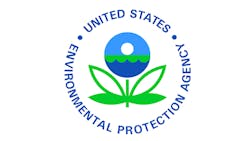EPA Issues Proposed Rules on Chemical Risk Evaluation
After 40 years, the U.S. Environmental Protection Agency will have established rules to prioritize and evaluate chemicals in the marketplace and the manufacturing process.
The Frank R. Lautenberg Chemical Safety for the 21st Century Act, which was signed on June 22, 2016, gives the EPA the authority to look at and regulate unevaluated chemicals in the marketplace originally grandfathered in with the Toxic Substances Control Act.
A series of public meetings helped determine three proposed rules the EPA will use to administer the new evaluation process, which goes into effect on June 22, 2017.
- Inventory - There are currently over 85,000 chemicals on EPA’s inventory and many of these are no longer actively produced. This rule will require manufacturers, including importers, to notify EPA and the public on the number of chemicals still being produced.
- Prioritization - The EPA will use a risk-based screening process and criteria to identify whether a particular chemical is either high or low priority. A chemical designated as high priority must undergo evaluation. Chemicals designated as low priority are not required to undergo evaluation.
- Risk Evaluation – With this rule, the agency will identify steps for the risk evaluation process, including publishing the scope of the assessment. Chemical hazards and exposures will be assessed, along with characterizing and determining risks. This rule also outlines how the agency intends to seek public comment on chemical evaluations.
The TSCA, which originally was enacted in 1976, failed to provide EPA with the tools to evaluate chemicals and to require companies to generate and provide data on chemicals they produced.
Now, if EPA identifies unreasonable risk in the evaluation process, it is required to eliminate that risk through regulations. The agency must have at least 20 ongoing risk evaluations by the end of 2019.
Comments on the proposed rules must be received 60 days after date of publication in the Federal Register. At that time, go to the dockets at www.regulations.gov and search for: HQ-OPPT-2016-0426 for the Inventory Rule; HQ-OPPT-2016-0636 for the Prioritization Rule; and HQ-OPPT-2016-0654 for the Risk Evaluation Rule.
